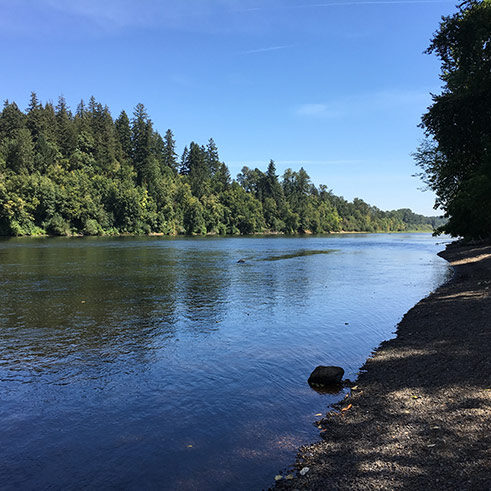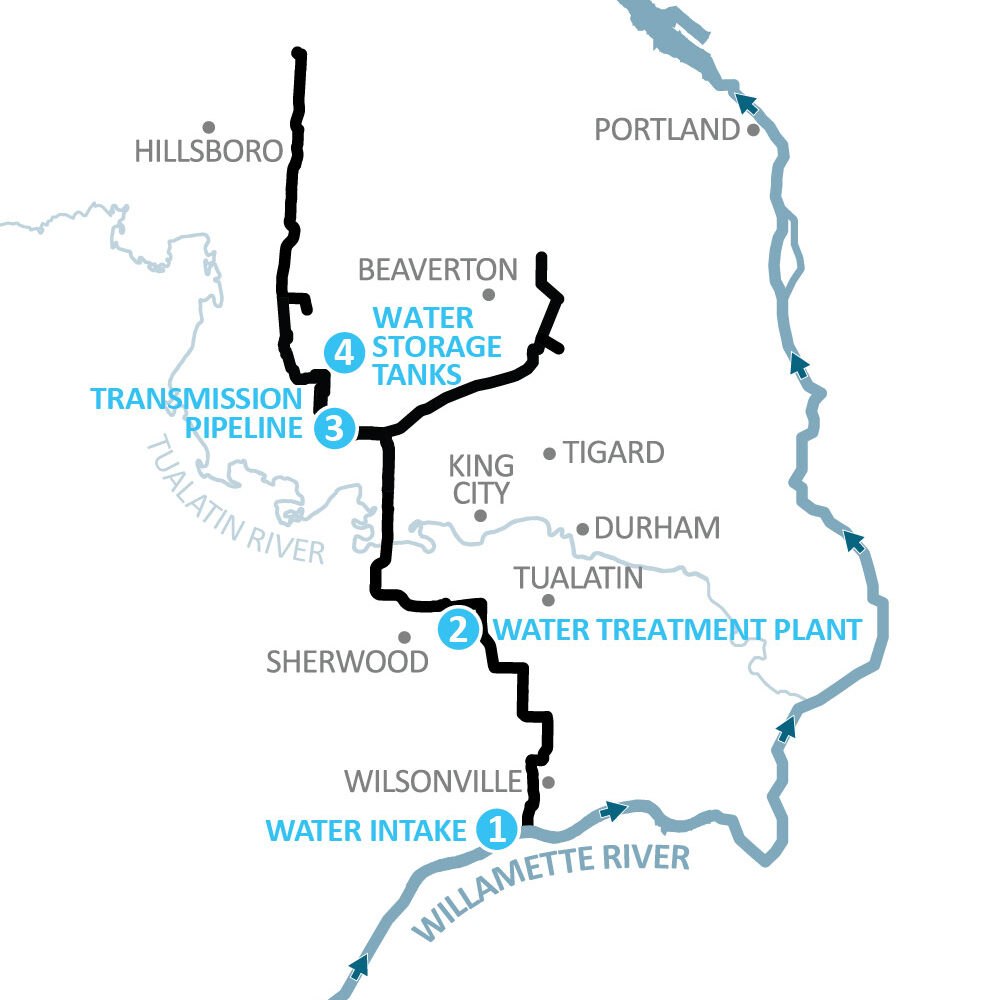
A growing number of Washington County cities are eyeing the Willamette River as a future source of drinking water.The Tualatin Valley Water District and Hillsboro are planning to build a pipeline and water treatment plant to provide customers Willamette water by 2026. The first step is a two-year study that will lay out the details and costs for the project.
Now other cities are looking to join the study, as a way to explore their own Willamette water options at a discounted rate. This is a shift from early last decade, when water districts put restrictions on shifting to the Willamette, then a more uncertain and untested water supply.
Tigard and Tualatin officials agreed in July to help pay for the study. The Beaverton City Council will decide Sept. 10 whether to do the same.
Pitching in for the study doesn’t equate a decision to tap into the Willamette. By contributing to the planning costs, the cities would make sure their needs and concerns would be addressed in the study, which could better position them to become full partners on the project in the future.
Tualatin councilors were told in a July presentation that the study had a preliminary cost between $800,000 and $1 million. Todd Heidgerken, manager of community and intergovernmental relations for the Tualatin Valley Water District, would not confirm that estimate and said negotiations for a final price with engineering firm HDR Inc. are still under way.
Sherwood, Wilsonville, Clean Water Services, West Slope Water District and Raleigh Water District have not indicated interest in contributing to the study, Heidgerken said.
Here’s a closer look at each city’s role.
Beaverton
Contribution to study: Beaverton will recommend to its city council Sept. 10 that it should contribute “in the range of $100,000” to the Willamette study, said Beaverton Public Works Director Peter Arellano.
Current water supply: Nearly 80 percent of Beaverton residents use the city’s water supply from the Tualatin River and the Scoggins and Barney reservoirs. The rest buy water from the Tualatin Valley Water District, the West Slope Water District or the Raleigh Water District.
Water rights on the Willamette? No. If Beaverton joins the planning effort, the city would look into obtaining Willamette water rights, Arellano said.
Why the Willamette is a long-term option: Ideally, Beaverton should have multiple water supplies, in case the reservoirs do not fill or the Tualatin River supply is threatened, Arellano said.
Joining the planning would allow Beaverton to “basically get a place on the team, and to give us some time to analyze our options and needs and see if it’s the appropriate project for us,” he said.
Tigard
Contribution to study: The Tigard City Council approved spending up to $100,000, though an intergovernmental agreement has not been signed yet.
Current water supply:Bull Run Watershed water from Portland.
Water rights on the Willamette: Yes, but voter approval is required to use Willamette drinking water.
Why the Willamette is a long-term option: Tigard officials expect the city’s new water partnership with Lake Oswego to meet its water needs until the 2040.
“We may need to start saying the Clackamas River just cannot produce enough water for Tigard’s continued growth,” said Tigard Public Works Director Dennis Koellermeier.
Tualatin
Contribution to study: The Tualatin City Council approved spending up to $100,000, though an intergovernmental agreement has not been signed yet.
Current water supply: Bull Run Watershed water from Portland.
Water rights on the Willamette: Yes, but voter approval is required to use Willamette drinking water.
Why the Willamette is a long-term option: Tualatin’s relationship with the Portland Water Bureau has been growing increasingly tense, with fears of continuing rate increases as customers like Tigard and TVWD depart for new sources.
“We perceive the City of Portland as becoming less and less reliable as a water supplier,” said Councilor Ed Truax, who is outspoken on water issues, explaining why Tualatin is looking at other water sources.
Hillsboro and Tualatin Valley Water District
Contribution to study: Hillsboro and TVWD will pay the total cost, minus contributions from Tigard, Tualatin and maybe Beaverton.
Current water supply: Hillsboro uses a combination of Tualatin River, Henry Hagg Lake and Barney Reservoir water. TVWD gets water from the Joint Water Commission, the Portland Water Bureau and its own aquifer storage and recovery well.
Water rights on the Willamette: Yes, and TVWD eliminated a voter-approval requirement for use.
Why the Willamette is a long-term option: Hillsboro and TVWD agreed in February and April, respectively, to deliver Willamette water to their customers by 2026. Both jurisdictions expect that their current water supplies will not meet future demand.
Other projects: TVWD and Hillsboro are also getting started on designing a pipeline that would be installed as part of Washington County’s extension of Southwest 124th Avenue from Southwest Tualatin-Sherwood Road to Southwest Grahams Ferry Road.
No additional jurisdictions have signed on to that project, Heidgerken said. Tualatin agreed to provide technical assistance since the pipeline is in its city.










